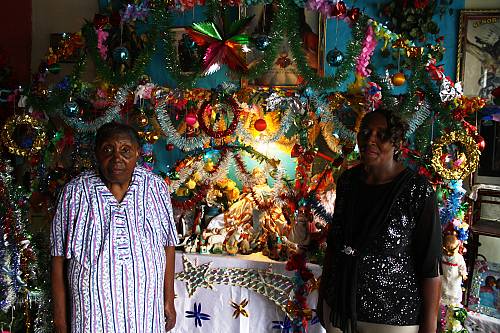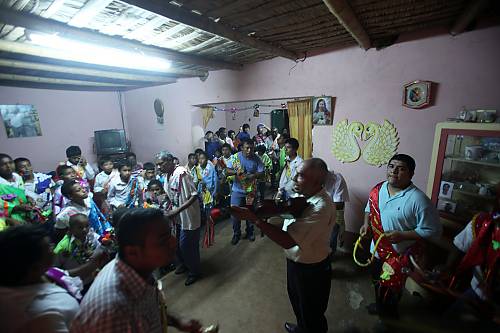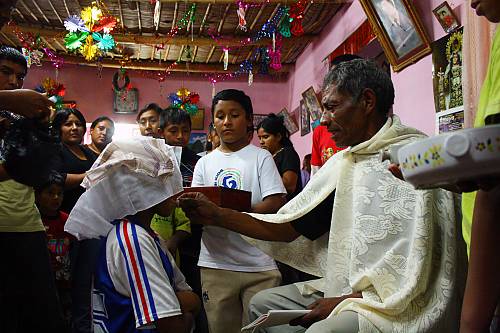‘Hatajo de Negritos’ and ‘Hatajo de Pallitas’ from the Peruvian south-central coastline
Inscribed in 2019 (14.COM) on the Representative List of the Intangible Cultural Heritage of Humanity

‘Hatajo de Negritos’ and the ‘Hatajo de Pallitas’ from the Peruvian south-central coastline are two complementary expressions featuring music and singing as part of Christmas celebrations, hailing from the central department of Ica in Peru. The expressions are biblical representations of the story of the visit of a group of shepherds to the new-born baby Jesus and the arrival of the Wise Men. Both expressions combine pre-Hispanic Andean values with the European Catholicism and rhythmical inheritance of African descendants arriving in the Americas in colonial times. This complexity has allowed both expressions to become representations of the mestizo and afro-descendant identity of the region. The dance of the ‘negritos’ is mostly performed by men to the tune of a long fiddle, along with singing, shoe-tapping dance and bells. The dance of ‘pallitas’ is performed by women to the sound of the guitar or fiddle, accompanied by a ‘zapateo’ and singing. Both dances – regarded as symbols of religious devotion and spiritual contemplation – are performed by groups of up to fifty people in town squares and churches in December and January, as well as in family homes. Both expressions are taught to the younger generation from early childhood, with elders encouraging children to learn a large variety of Christmas carols, ‘zapateo’ rhythms and dance sequences as a sign of devotion.









